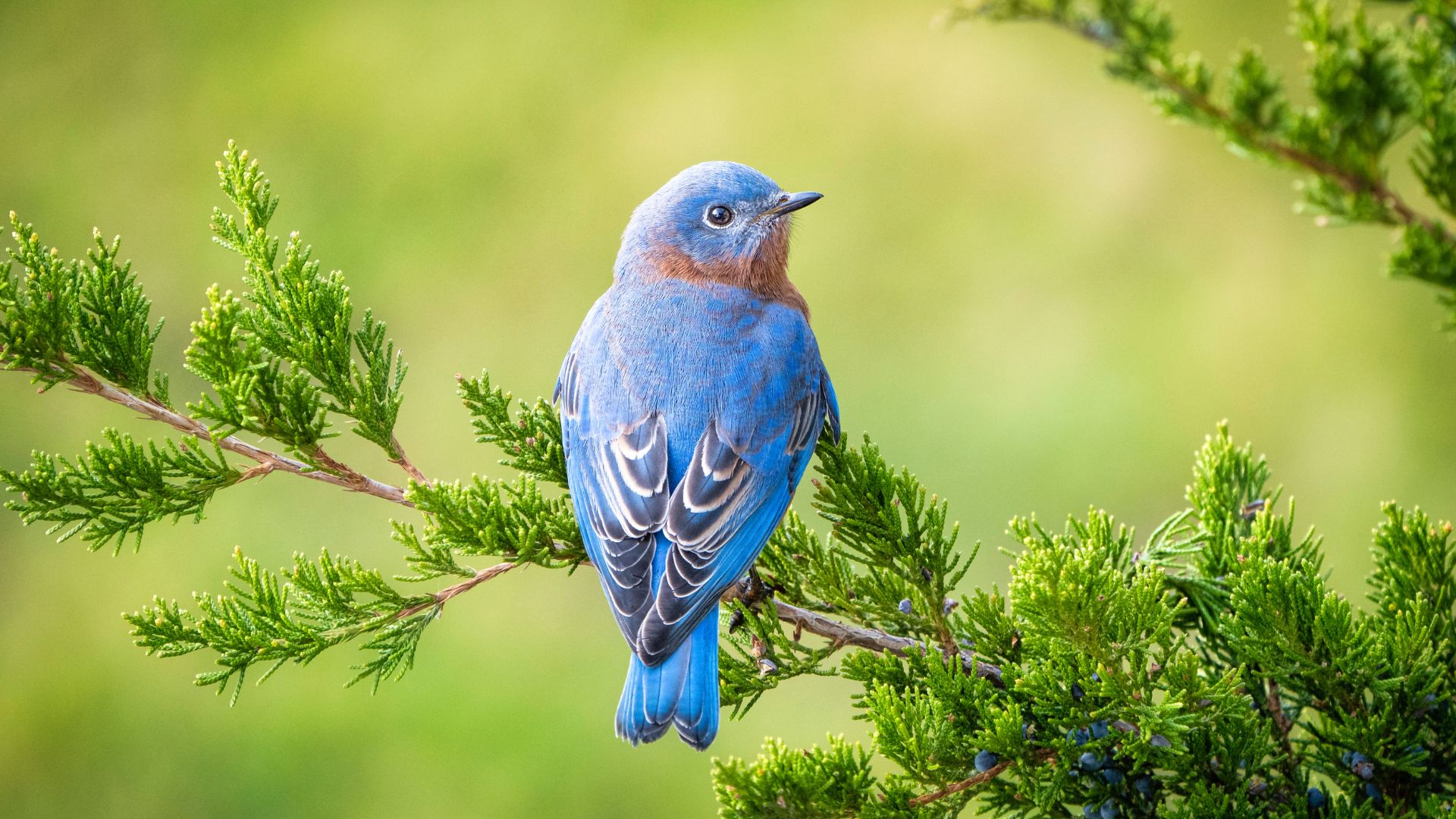Yes, Bluebirds are smaller than Blue Jays, less aggressive, and have notable differences in the appearance of the female and male counterparts and plumage.
Blue Jays are often only found in the eastern part of the United States in deciduous forests, while bluebirds live in open spaces in the desert of New Mexico and Arizona to the plains of Montana or Utah.
Habitat aside, they also have very different songs, temperaments, and characteristics to make them easier to tell apart.
Blue Jay Songs
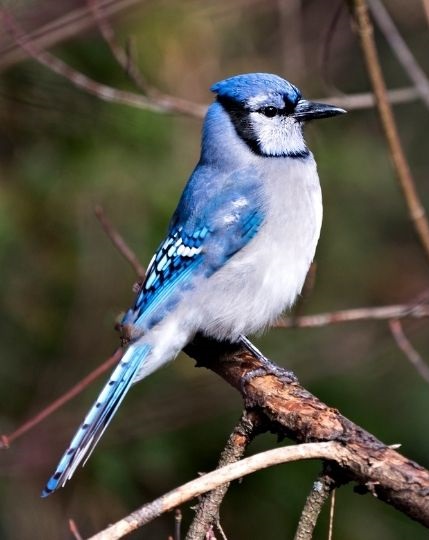
The North American Blue Jay has a few songs in its repertoire
The most common song heard from birdwatchers is the classic jeer.
They often make a sharp and piercing sound when communicating with each other.
It is so loud because it’s attempting to communicate with local Blue Jays, and it needs to be heard.
It also makes this loud jeer when it notices a threat and needs to alert nearby birds
In addition to the classic jeer, the North American Blue Jay also has what is referred to as a whisper song. The whisper song is used during courtship. Their whisper song is primarily used in mating and includes a series of chirps, gurgles, whirrs, and whines.
Female Blue Jays make a ‘rattle call’ when other Jays intrude on their space. This rattle call sounds like a low vibrational growl and can be heard when many Blue Jays come together.
Bluebird Songs

In comparison, the sound of a bluebird is much milder.
It has a few low-pitched songs that last about 2 seconds and are comprised of just a few notes.
The males will perch on a high branch to lure a female with their song, or sing mid-flight in an attempt to find a mate.
When females sing a similar song, it is often to warn local birds that a predator is nearby.
When dealing with altercations with other bluebirds, they emit a high pitched screech as a signal to get away.
Differences in Size and Shape
The most notable difference between these two birds boils down to size.
While Blue Jays often vary in size from region to region, even the smallest Blue Jay is still much bigger than a bluebird.
A full-grown Blue Jay has a wing span of 13-17 inches.
Bluebirds, on the other hand, only have a wing span of 9.8-12.8 inches.
Blue Jays have a large, bulky frame with a slicked-back crest that tufts when agitated.
Bluebirds are far more delicate in their frame, and they do not have a crest.
Color patterns in Bluebirds
The western bluebird has a subtle blue plumage with a rust orange breast with white accents.
These stunning blue feathers run from the top of their blue head down to the end of their tail feathers.
The bright coloring of these birds stands out against gray or black feet, legs, and beaks.
Color patterns in Blue Jays
While the coloring of the bluebird is simple and slight, Blue Jays have more detail in their color patterns.
They have bright blue plumage that is specked with accents of white and black.
North American Blue Jays look nothing like bluebirds, but as you travel south, things get tricky.
The Florida Blue Jay, or a Steller’s Jay, is technically a jay, but it has more visual similarities with a bluebird.
It has subtle blue feathers that are similar to a bluebird, but it doesn’t have the same orange breast.
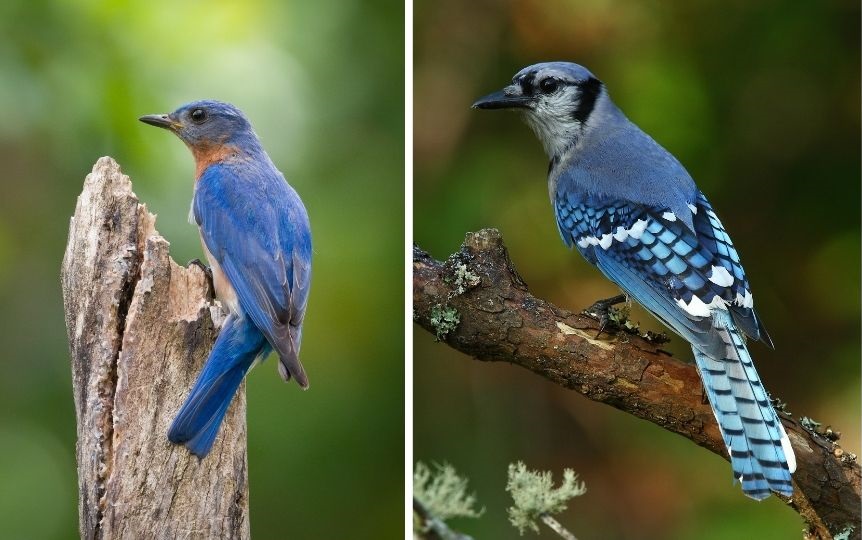
Behavioral Traits of the Bluebird vs Blue Jay
Comparing the behavior between a Blue Jay and a bluebird is like comparing Rocky Balboa to Mary Poppins.
Blue Jays are quite aggressive and territorial, and they are considered bully birds.
They are loud, vocal, and terrorize bird feeders year-round.
Bluebirds are much more easygoing and social, at least when it comes to humans and other birds.
While they can get pretty aggressive, it’s often with each other rather than other birds.
During nesting season, bluebirds have been spotted by birdwatchers fighting to the death for a coveted nesting spot.
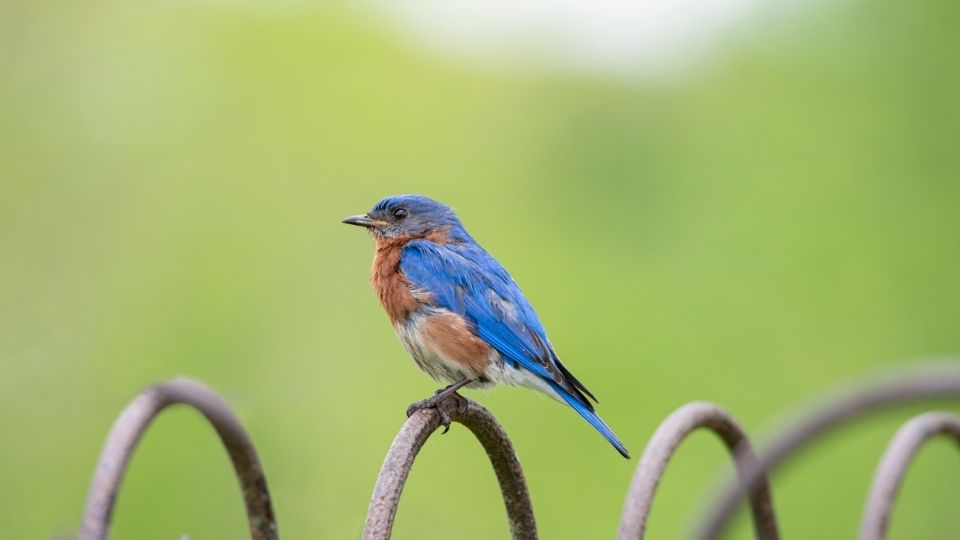
Typical Eastern Bluebird Habitat
Bluebirds typically flock to more open spaces with patchy vegetation.
They are often found in places such as golf courses, and open fields, and steer clear of dense forests.
Often, female bluebirds make their nest in natural cavities or nesting boxes made from grass, leaves, and twigs.
The male bluebird finds the nest or cavity and displays it to the female.
If the female approves, she will make her nest with the male bluebird.
These birds thrive on a diet of mostly berries, fruit, seeds, and bugs.
However, sometimes they have been seen by bird watchers eating smaller prey such as lizards, frogs, and even snakes.
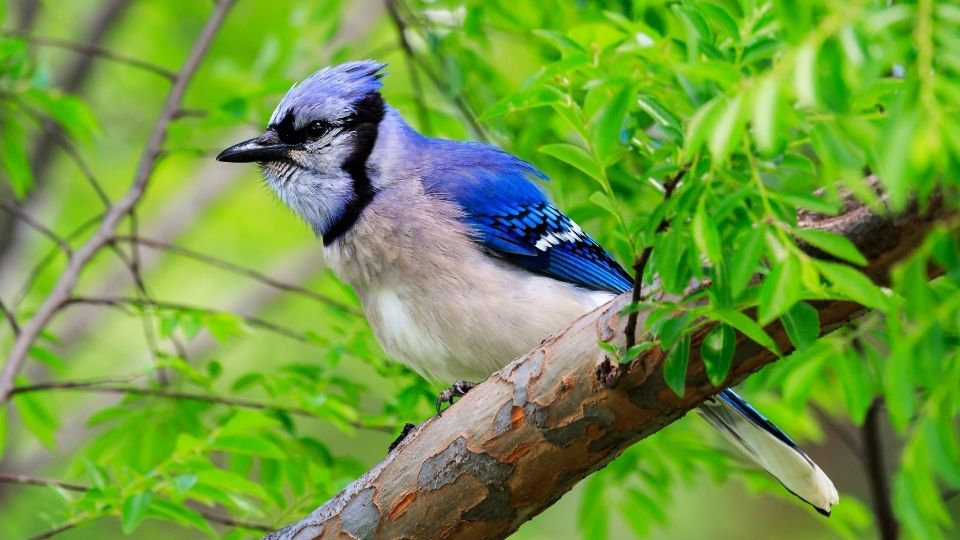
Typical Blue Jay Habitats
Blue Jays are often found in the eastern part of North America from Canada down to the southern tip of Florida.
They prefer deciduous forests with lush pine and oak trees ripe with juicy mealworms and acorns.
More often than not, Blue Jays are spotted hanging around backyard feeders partaking in sunflower seeds, and suet year-round.
They make their nests in dense branches situated at least 10-25 feet off of the ground for ample protection.
The male Blue Jay does all of the material-gathering for the nest, while the female builds.
Tips to Identify Different Species
So, how can you tell the difference between these two birds?
The biggest difference between a bluebird and a Blue Jay boils down to size and coloring.
The Blue Jay is much larger than a bluebird and has blue, white, and black coloring with a blue crest.
The bluebird is more easily distinguished by noting the orange coloring on its breast.

